|
|
|
|
|
|
|
|
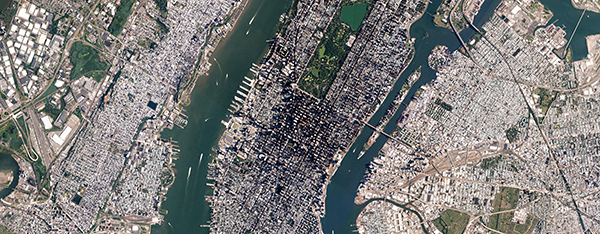 |
PlanetScope • New York City, New York, USA • July 15, 2016 |
In this week’s issue: Satellites take a look at cities around the world, a volcano erupts at the very edge of Alaska, and Karl the Fog rolls into San Francisco. |
|
|
|
|
FEATURED STORY Cities
We’ve been building and inhabiting cities from the moment we laid down the bow and picked up the hoe. Or, in historian-approved language, when the rise of agriculture started to replace nomadic lifestyles millennia ago. Ever since then, cities have sprouted, expanded, and laid claim to critical junctures around the globe. Some have fallen and remain now only as archaeological ruins. Others have been paved over, remodeled, or built around. But the accelerating trend toward urbanization has stayed constant. Love them or hate them, they’re certainly here to stay a while.
|
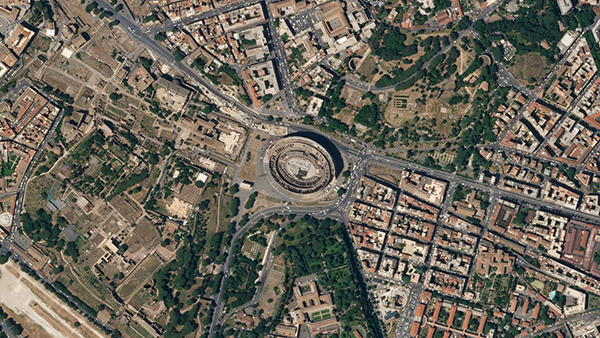 |
SkySat • Rome, Italy • April 6, 2020 |
Cities are a laundry list of disproportion and extremes. They cover just 3% of Earth’s landmass but are home to over 55% of the global population—a number expected to be 68% by 2050. Last week we covered the vast areas of land we’ve devoted to agriculture, so this week we wanted to turn towards its urban counterpart: these dense, complex, sprawling nexuses of human civilization. |
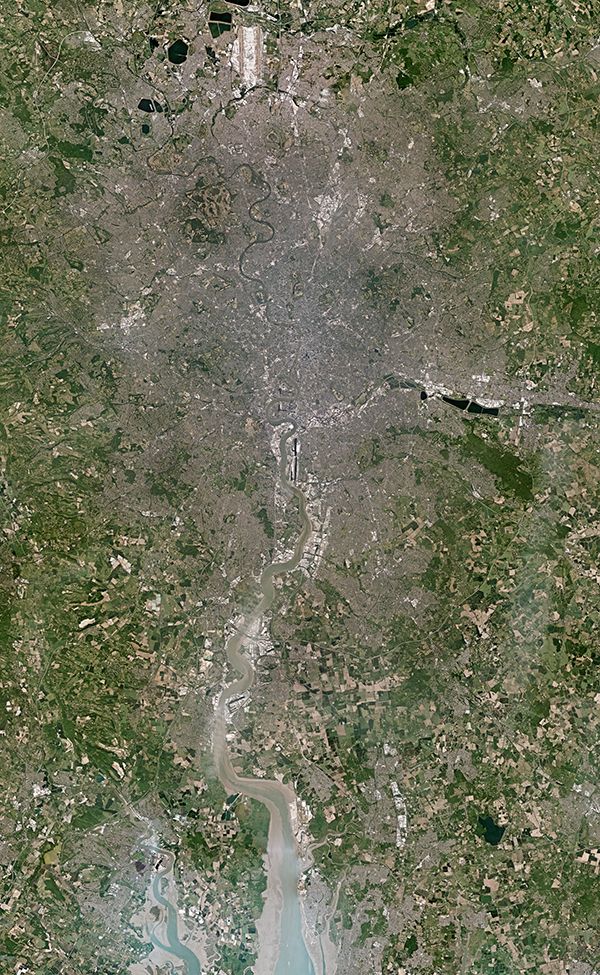 |
Monthly Mosaic • London, England • May 2020 |
Despite their relatively small share of Earth’s surface, these booming metropolitan centers have and continue to define culture, globalization, and everything in between. Industrialization in particular has been a major driving force for urbanization. The flux of workers from grassy fields to concrete sidewalks prominently rose in the 1800s with increased demand in city factories. And this steady migration has continued well into the 21st century. |
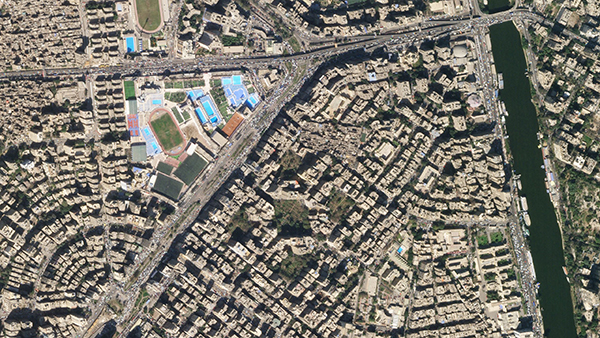 |
SkySat • Cairo, Egypt • February 12, 2020 |
Part of the reason why cities don’t take up as much ground area as expected is their tendency to build upwards, not just out. It’s perhaps the most defining feature of a city, but it’s a perspective that’s often difficult, if not impossible, to discern from top-down satellite imagery. An oblique—at an angle—viewpoint is the best way to really make these towering features pop. |
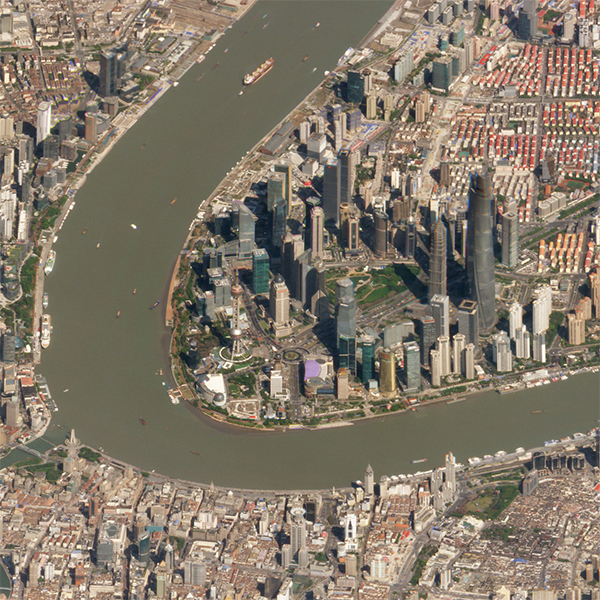 |
SkySat • Shanghai, China • March 9, 2018 |
As populations grow and urbanization continues into the modern day, the number of megacities—cities with a population greater than 10 million—is expected to rapidly rise. The UN reported 10 megacities in 1990, 33 in 2018, and an expected 43 by 2030. Tokyo is the current leader in most populous cities with an astounding 38 million people in all its districts. This satellite image shows just a mere fraction of its expanse. |
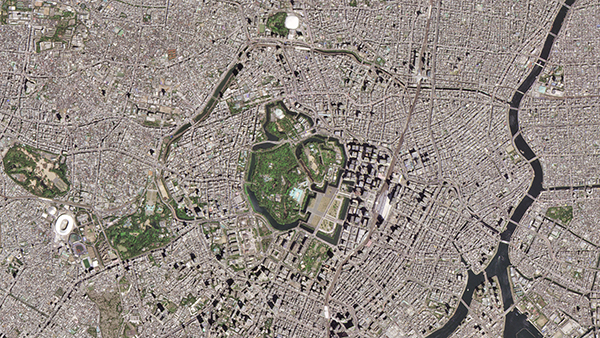 |
PlanetScope • Tokyo, Japan • April 16, 2019 |
When viewing cities from space, human beings are often only observed indirectly: construction over time or cars accumulating at rush hour. But in some cities, people gather in such great numbers that the collective can be seen directly. Millions of Muslims make the pilgrimage to Mecca in Saudi Arabia each year, congregating around the Kaaba in the Great mosque of Mecca. It’s an event so grand in scale that only a view from orbit is suited to the task. |
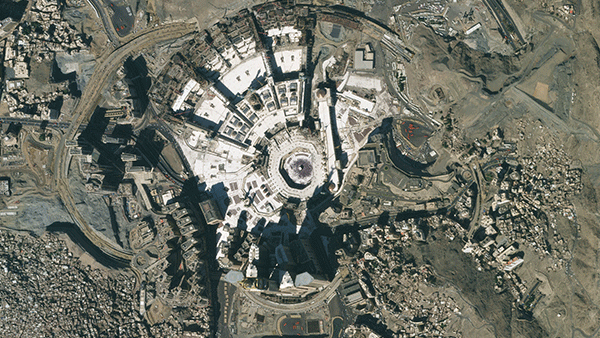 |
SkySat • Mecca, Saudi Arabia • January 25, 2020 |
|
Besides their practical purposes, cities also reflect a location's environment, culture, and history. Etched into the city planning of Delhi—India’s largest megacity and capital—is a record of its storied past. British architects designed the capital of New Delhi (seen in the image’s bottom left) with broad, straight, and tree-lined streets. The colonial influence sharply contrasts with the narrow, winding streets of Old Delhi (top of image) and eastern Delhi (right). |
 |
NDVI and CIRE comparison |
Another disproportionate characteristic of cities is their energy usage, which is estimated at 78% of global supply. Pollution, waste, and spread of disease are all associated with urbanization. But perhaps most concerning is its greenhouse gas contribution—currently at 60% of global emissions. And as cities help fuel the climate crisis, two of its effects are striking back with particular intensity. |
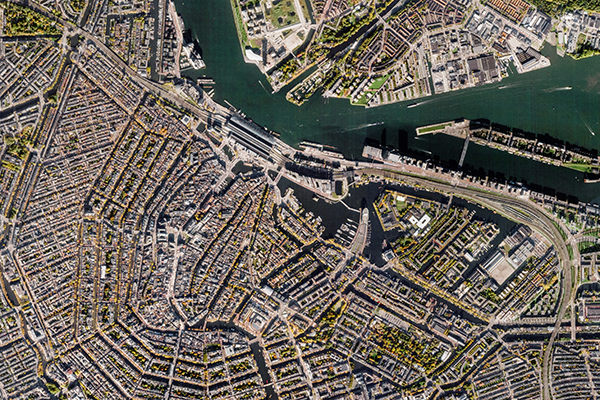 |
SkySat • Amsterdam, The Netherlands • October 27, 2015 |
Rising temperatures create a slew of problems for everyone, but for some more than others. And as it turns out, the properties that make cities so city-like—concrete, buildings, smog, traffic, and asphalt—are also making them hotter by about 5.5° C (10° F). It’s called the heat island effect. And it's troublesome for all cities, but particularly so for those already struggling with preexisting and severe climate problems. |
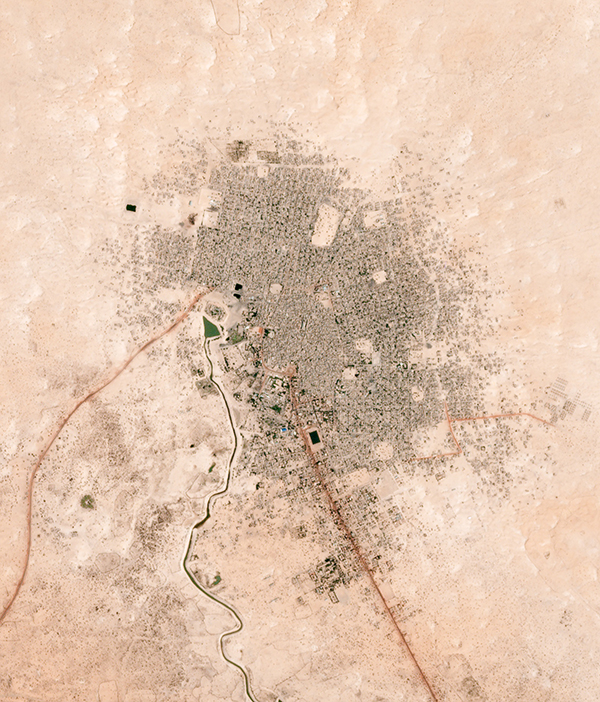 |
PlanetScope • Timbuktu, Mali • March 5, 2017 |
As temperatures rise, so does the sea level. Many major cities are built around waterways, which puts hundreds of millions of people living in low coastal areas at risk. For places like Venice—Italy’s famous island city—the tide is already sweeping in. If we’re not careful, the legendary tale of Atlantis could prove to be prophecy, not myth. |
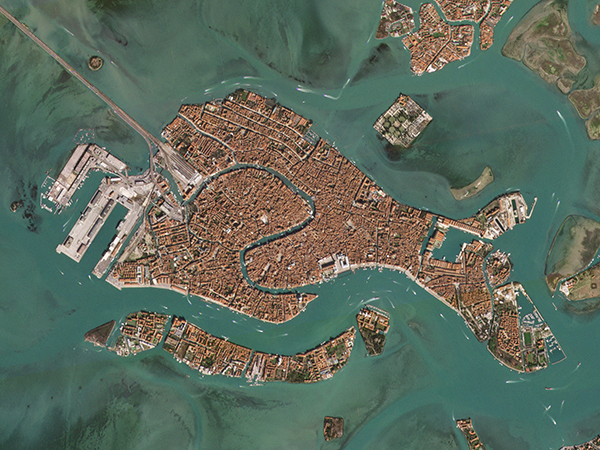 |
PlanetScope • Venice, Italy • February 28, 2020 |
Cities, like everything else that sits upon the Earth’s crust, are subject to change. Their evolution over millennia has been profound so far, but it will only get more dramatic in the years to come. They’ll grow higher to accommodate more people and become better resilient in the face of changing climatic conditions. Overall they’ll be greener, smarter, and more efficient—or, in a word, futuristic. We don’t know all the incredible and diverse ways they’ll change, but we’ll be there to document them. |
 |
SkySat • São Paulo, Brazil • March 12, 2018 |
Bonus: If you asked the French, they’d probably tell you all roads lead not to Rome but to Paris. And there’s a strong argument to be made when viewing the Arc de Triomphe from above. The 19th century monument radiates rich history, French symbolism, and twelve avenues that spread throughout the city of love. |
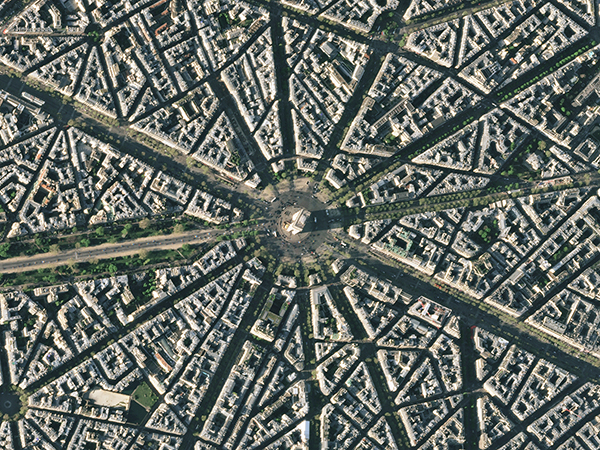 |
SkySat • Arc de Triomphe, Paris, France • April 9, 2022 |
|
|
|
|
|
Mount Cerberus |
The Mount Cerberus volcano is erupting way out at the end of Alaska’s Aleutian Islands—that tail-like chain of landmasses that sticks out into the north Pacific. We captured the dramatic scene of brownish ash and gas intermingling with passing white clouds. Though you’ve likely never visited Semisopochnoi, the remote island that contains Mount Cerberus, it’s possible you’ve heard the name during a game of trivia. That’s because it’s considered—albeit contentiously—the easternmost point in the US despite being geographically west of all the other states. The reason? It sits just past the 180th meridian, meaning the island is actually located in the Eastern Hemisphere. It’s a technicality, but we enjoy it, so we’re siding with the cartographers on this one. |
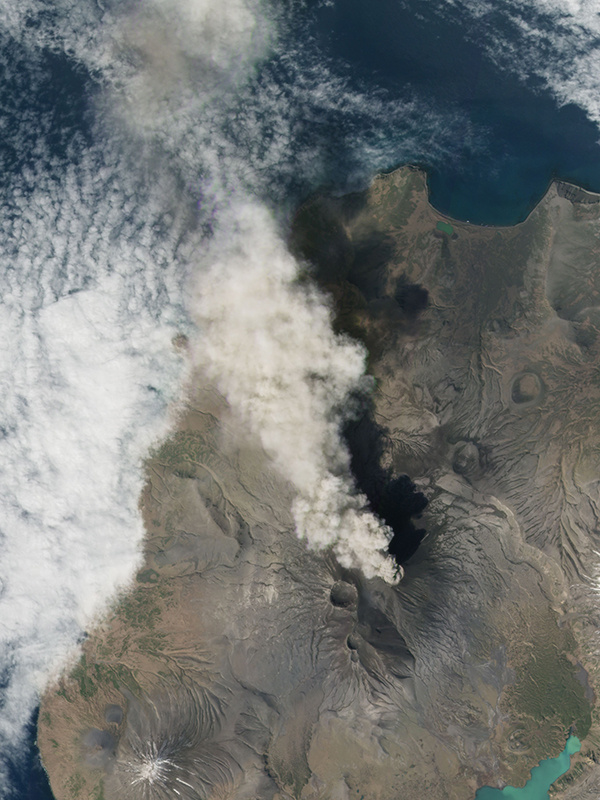 |
PlanetScope • Semisopochnoi Island, Alaska, USA • May 15, 2022 |
|
|
|
|
|
Karl the Fog |
It’s about to be summer in the northern hemisphere, which means warmth and sunny days for most places… but not so much here at headquarters. We love our San Franciscan not-so-summery-summers and the curiously-named Karl the Fog that accompanies them, but we can’t help but gripe just a smidge. Anyways, here’s a picture of Karl in action, rising over the Pacific and invading beloved areas like Ocean Beach and the Golden Gate Bridge. Hopefully they’ll see sunnier days. |
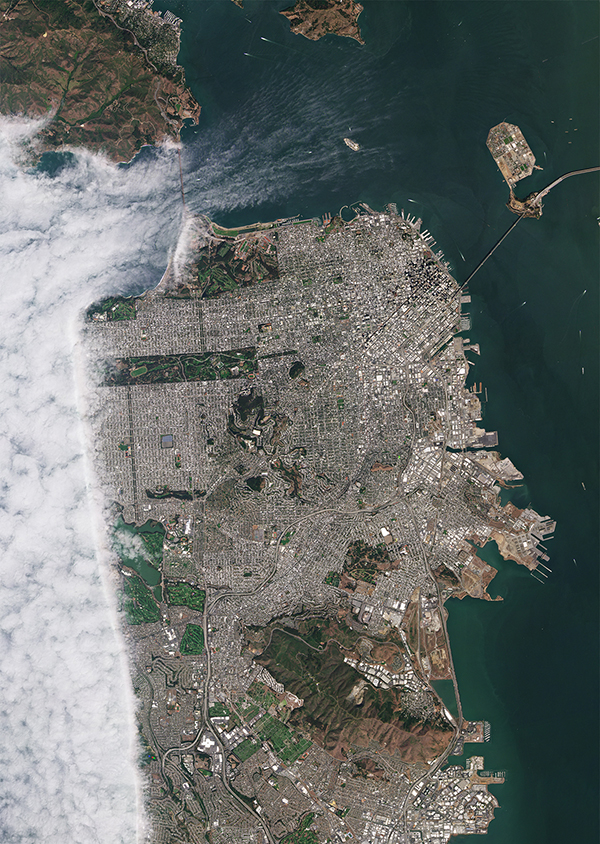 |
PlanetScope • San Francisco, California, USA • September 11, 2019 |
|
|
|
|
|
Memorial Day |
It’s almost Memorial Day weekend, so we wanted to take a moment to remember and honor our fallen men and women in uniform—thank you for your service. Shown here is the site of the Battle of Shiloh, a key Civil War battle in southwestern Tennessee. We hope you enjoy the long weekend and have a happy unofficial start to summer! |
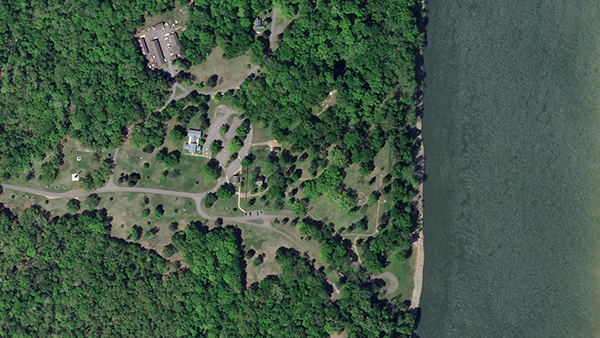 |
SkySat • Shiloh National Military Park, Tennessee, USA • April 10, 2020 |
|
|
|
|
|
|
|
|
|
|
|